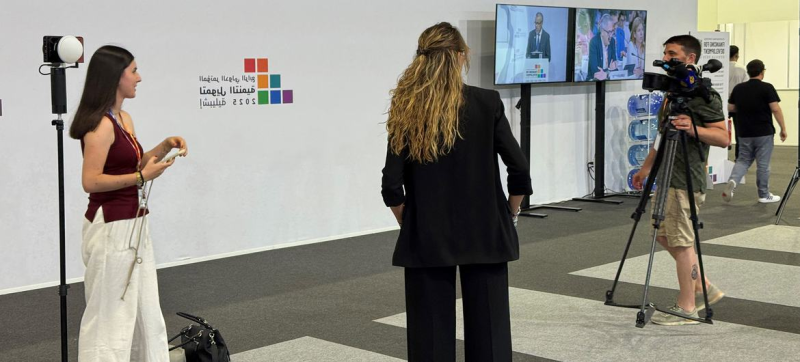- Khaleda now not fit for travelling: Medical Board |
- Panchagarh records lowest temperature 10.5°C so far this year |
- Christmas returns to Bethlehem after two years of Gaza war |
- কলাপাড়া মুক্ত দিবসে এবার সাড়া নেই কার |
- One killed, two injured in attack at Ctg meeting over marriage |
The Missing Half: Why Women Deserve More Media Coverage

Women journalists working in the press room of the 4th International Conference on Financing for Development which took place in Sevilla, Spain.
Women make up half of the world’s population but receive only 26 per cent of media coverage, according to the latest UN-backed Global Media Monitoring Project (GMMP), the world’s largest study on gender representation in news media.
“When women are missing, democracy is incomplete,” said Kirsi Madi, Assistant Secretary-General and Deputy Executive Director of UN Women, responding to the findings.
Ms. Madi stressed that the underrepresentation and misrepresentation of women in the media must be recognised as a critical issue to safeguard democratic standards for future generations.
Despite severe restrictions in many countries, women continue to lead community initiatives, support education, and build resilience. In Afghanistan’s Kunduz Province, Mehrgan, a women’s organisation once devastated by funding cuts, has rebuilt its capacity with UN Women’s support and is now helping other groups do the same.
The report warns that when media coverage focuses only on women’s victimhood, it erases their leadership and hides their contributions to peace, stability, and progress. Stories like Mehrgan’s highlight not only the challenges but also the solutions women provide.
Coverage of gender-based violence (GBV) remains scarce. “Fewer than two in 100 stories cover the abuse that far too many women experience,” UN Women noted. Instead, the media often reinforces stereotypes, portrays GBV as isolated, and silences survivors.
Representation is even worse for minority women. While minority groups make up six per cent of those featured in news coverage, only 38 per cent are women. The likelihood of a woman in the news being from a minority group is less than one in ten.
Digital news, however, shows promise. During the pandemic, female online reporters increased from 25 per cent in 2015 to 42 per cent in 2020. Campaigns like the UN’s HeForShe continue to challenge stereotypes and promote fairer representation.
As the UN’s 80th General Assembly approaches, UN Women warned that progress over the past 30 years has been minimal and urged urgent action to strengthen gender parity in media representation.

